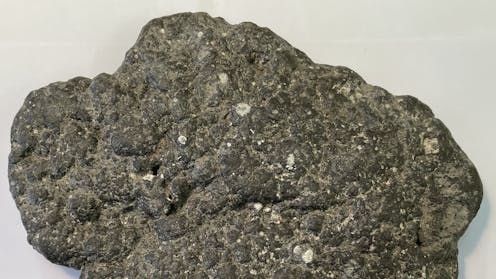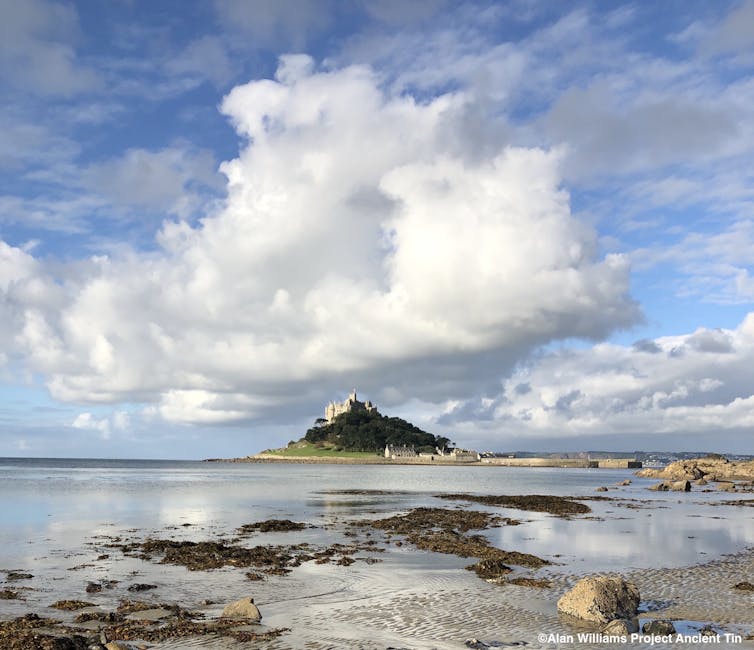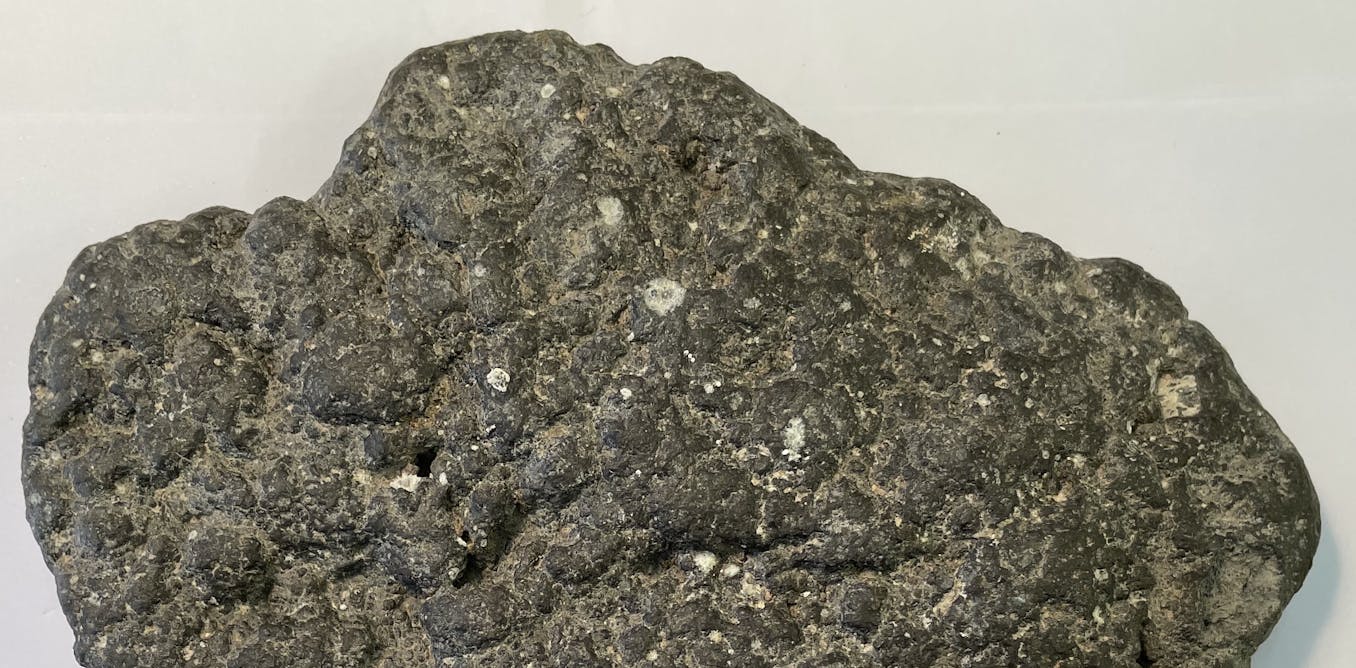[ad_1]

Tin was the critical mineral of the ancient world. It was essential to alloy with copper to make bronze, which for many centuries was the preferred metal for tools and weapons. Yet sources of tin are very scarce – and were especially so for the rapidly growing bronze age towns, cities and states around the eastern Mediterranean.
Though major tin deposits are found in western and central Europe and in central Asia, by far the richest and most accessible tin ores are in Cornwall and Devon in southwest Britain. Yet it has been difficult to prove that these British deposits were used as a source for people in the eastern Mediterranean. So for more than two centuries, archaeologists have debated about where bronze age societies obtained their tin.
In a new study published in the journal Antiquity, our team analysed the chemistry and different forms of particular elements in tin ores and artefacts from across Britain and Europe. These included tin ingots found at prehistoric shipwreck sites at Salcombe and Erme, southwest Britain, as well as in the Mediterranean.
Get your news from actual experts, straight to your inbox. Sign up to our daily newsletter to receive all The Conversation UK’s latest coverage of news and research, from politics and business to the arts and sciences. Join The Conversation for free today.
This revealed that tin ingots from three ancient shipwrecks discovered off the coast of Israel and one shipwreck found off the Mediterranean coast of France originated in southwest Britain. The shipwrecks found near Israel date to around 1300BC, while the wreck from France has been dated to around 600BC.
Small farming communities across Cornwall and Devon would have dug, washed, crushed and smelted the abundant tin ore from the alluvial deposits in the region. The heavy sand to gravel-sized tin ore is in a layer buried under soft layers of barren silt, sand and gravel.
The tin ore is eroded from hard rock mineral veins and deposited by streams and rivers. There was simply no need for any complex and difficult mining of hard rock here. The tin would then have been taken to coastal locations where it could be traded.
It’s probable that the tin was then moved by traders through France to the Mediterranean coast, where it was loaded onto ships. It would make its way through flourishing trade networks between the islands of Sardinia and Cyprus before reaching markets in the east Mediterranean. The tin’s value would have increased immensely as it progressed along this 2,485 mile (4,000km) journey.
Tin is the first commodity to have been exported across the entire European continent. It was produced and traded at a potentially vast scale, but is rarely found in archaeological sites due to corrosion. But what we do known is that by 1,300BC, virtually all of Europe and the Mediterranean had widespread and consistent access to bronze.
We know of more than 100 bronze age copper mines from Ireland to Israel and from Spain to the southern Urals in Russia. Yet these would have been just a small proportion of the copper mines active at the time.
Given that bronze was typically made from 90% copper and 10% tin, if the copper produced by each of these known mines had to be matched by 10% tin, then tens or even hundreds of tonnes of tin were being traded each year – perhaps across distances of thousands of miles.

Alan Williams
The volume, consistency and frequency of the estimated scale in the tin trade is far larger than has been previously imagined and requires an entirely new perspective on what bronze age miners and merchants were able to achieve. It is no coincidence that it is around 1,300BC that technologies from the east, such as sophisticated systems for weighing items, as well as bronze swords, reached small farming communities living on the Atlantic coasts.
A millennium later, around 320BC, Pytheas the Greek, from Massalia (modern Marseilles), journeyed by land and sea to Britain, which was at the edge of the known world at the time. Pytheas wrote the earliest account describing the island and its inhabitants in a book which is now lost, but which has partially survived in snippets quoted by later classical authors.
Pytheas described how tin in southwest Britain was extracted and traded off a tidal island he called Ictis, before being taken across the sea and down the rivers of France to the mouth of the Rhone in only 30 days. In our research, we provide the first direct evidence for the tin trade Pytheas described. We show that tin from the Rochelongue shipwreck, off the south coast of France and dating to around 600BC, came from southwest Britain.
While we can establish the movement of tin across the seas, we know very little about the markets on land in which it was traded. We are now working with a team of archaeologists from Cornwall to excavate on the tidal island of St Michael’s Mount, which has long thought to have been the island of Ictis described by Pytheas.
A pan-continental tin trade continued in all periods after the bronze age and, in the absence of written records, our approach, using different methods of analysis, allows us to determine whether the tin came from Britain.
Historical records show that during the medieval period, tin from Cornwall and Devon enjoyed a virtual European monopoly, with production continuing until the last tin mine closed in 1998.
Today, tin is once again a critical and strategic mineral, this time for use in the electronics industry. As such it forms a vital part of the tools and weapons of the 21st century. Cornwall’s tin production is also set to soon restart, reviving a 4,000 year old industry.
![]()
Benjamin Roberts was PI on Project Ancient Tin which was funded by the Leverhulme Trust (Grant RPG-2019-333).
Alan Williams was the post doc on Project Ancient Tin which was funded by the Leverhulme Trust (Grant RPG-2019-333).
[ad_2]
Source link


